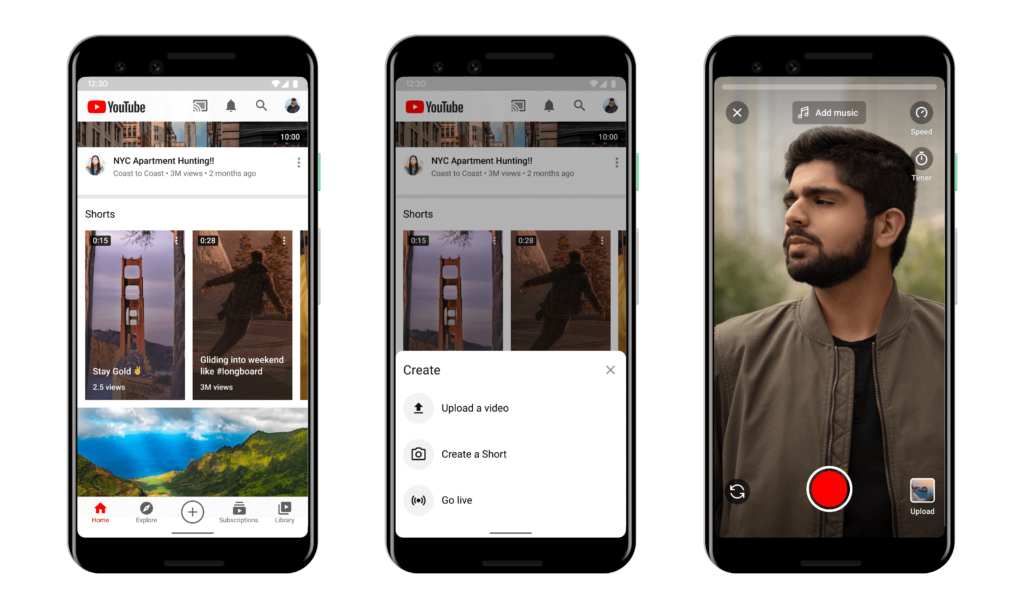The pandemic changed the way we think, how we view the world, and as individuals, it transformed who we are at our core. As marketers, we’re faced with the reality of COVID-19’s drastic shift in people’s social consciousness altering how they perceive and consume information. Even by the point society reaches a new “normal,” businesses will still have to market from a distance for a while.
So, where do we go from here? Consumer behavior shows phone activity is up during the pandemic. More people are watching videos on their phones, fueling their need to connect to the outside world. It appears the convenience, versatility and shareability of video might make it the most effective marketing tactic in the pandemic and post-pandemic world – but not the way it was always done before.
Here are eight reasons why socially-conscious video marketing is your brand’s bread and butter if you want a seat at the table with your target demographic:
Less About You, More About Them
Consumers are burdened with either being unemployed or overworked, knowing and caring for someone who has COVID-19 or grappling with the virus themselves. The last thing a people want right now is to be sold to. This means brands need to adapt to the new “woke” consumer. More Americans, especially Millennials and Gen Z expect brands to be socially-conscious, to solve their problems and enrich their lives. This means brands must rethink their strategies and examine what social issues their products help solve. For example, if you’re a solar company looking to sell residential home solar panels, refrain from talking about your solar panels being “top of the line” or “best in the market.” Instead, your key messages should convey the values people care about: energy equity, housing security and healthier environments.
Think Inside a 360 Degree Box
With brands having to market from afar and fewer shoppers trickling into stores, a new consumer experience is surging in popularity thanks to artificial intelligence: virtual reality (VR) and augmented reality (AR). Even while stuck indoors, consumers need to experience products in an interactive way that convinces them to make a purchase. More brands are coming online to offer these experiences, and soon, consumers will expect VR to be the norm across the board.
Vertical Video Reaching New Heights

Courtesy: Kamua transforms Widescreen (16:9) content into Story format for IGTV, Snap, Facebook
Like it or not, vertical video is here to stay. With consumers empowered to market themselves on popular platforms such as Instagram Stories and Reels, and TikTok, brands are having to mirror themselves in the world their target audiences live, thrive and play in. More brands are investing in new AI powered vertical video editing platforms. For example, let’s say your campaign video is shot in the traditional horizontal format, an AI powered editing software will predict, choose and edit the vertical plane best suited for the video.
Shoppable Videos Are Unstoppable
Short, interactive shoppable videos are a growing trend as brick-and-mortar retailers pivot to sell online, predominately on Instagram and Facebook. Walmart recently announced plans to pilot test its new video shopping experience on TikTok where users can buy directly from the big box retailer without leaving the app.
Short-Form Videos

Courtesy: YouTube Shorts beta testing in India ahead of global launch
Consumers are overwhelmed with too much information. There’s simply just too much going on: the pandemic, social injustice, unemployment, the climate crisis and the list goes on. They simply don’t have the time. Bite-sized, digestible videos, preferably under a minute, will create a bigger splash. Even YouTube is currently beta-testing 15-second shorts in India before accelerating a U.S. launch this spring. Shorter videos attract a wider range of audiences and promote shareability.
Animated Shorts
Short-form animated explainer videos are gaining traction. Animated videos are near pandemic-proof since they require mostly graphics created in the confines of an editing suite rather than juggling in-person filming and interviews which make it hard to socially distance during a pandemic. Animated shorts also have the advantage of lower production costs, inspire imagination and work great on social media.
Don’t Close the Door on Closed Captions
Most people watch video with the sound turned off and rely on closed captions to digest what they’re seeing, especially those who are hearing impaired. This still holds true during the pandemic with many people living in close quarters with family and roommates where privacy is a desired luxury. To ensure your video doesn’t get lost in translation, provide quality on-screen text with a #Captioned hashtag.
Drop the Formality
In other words – be relatable. The world has changed. We’re less formal now. Consumers respond better to videos that appear authentic and organic compared to ones that look overproduced. This ties back to the social responsibility and ethics people are looking for in brands. People can tell simply by looking at your video if you squandered millions on a product ad that could have gone to a social issue instead.
So, what can you do to get your voice heard in a more meaningful way? Carefully look at your upcoming campaigns and make sure socially-conscious marketing is a key component and decipher where it makes the best sense to harness video tactics in a way that resonates with your target audiences. Remember, in times like these, consumers need to know you care about them first and their money second.
Are you interested in learning more about socially conscious marketing and socially conscious video marketing? Contact us.


